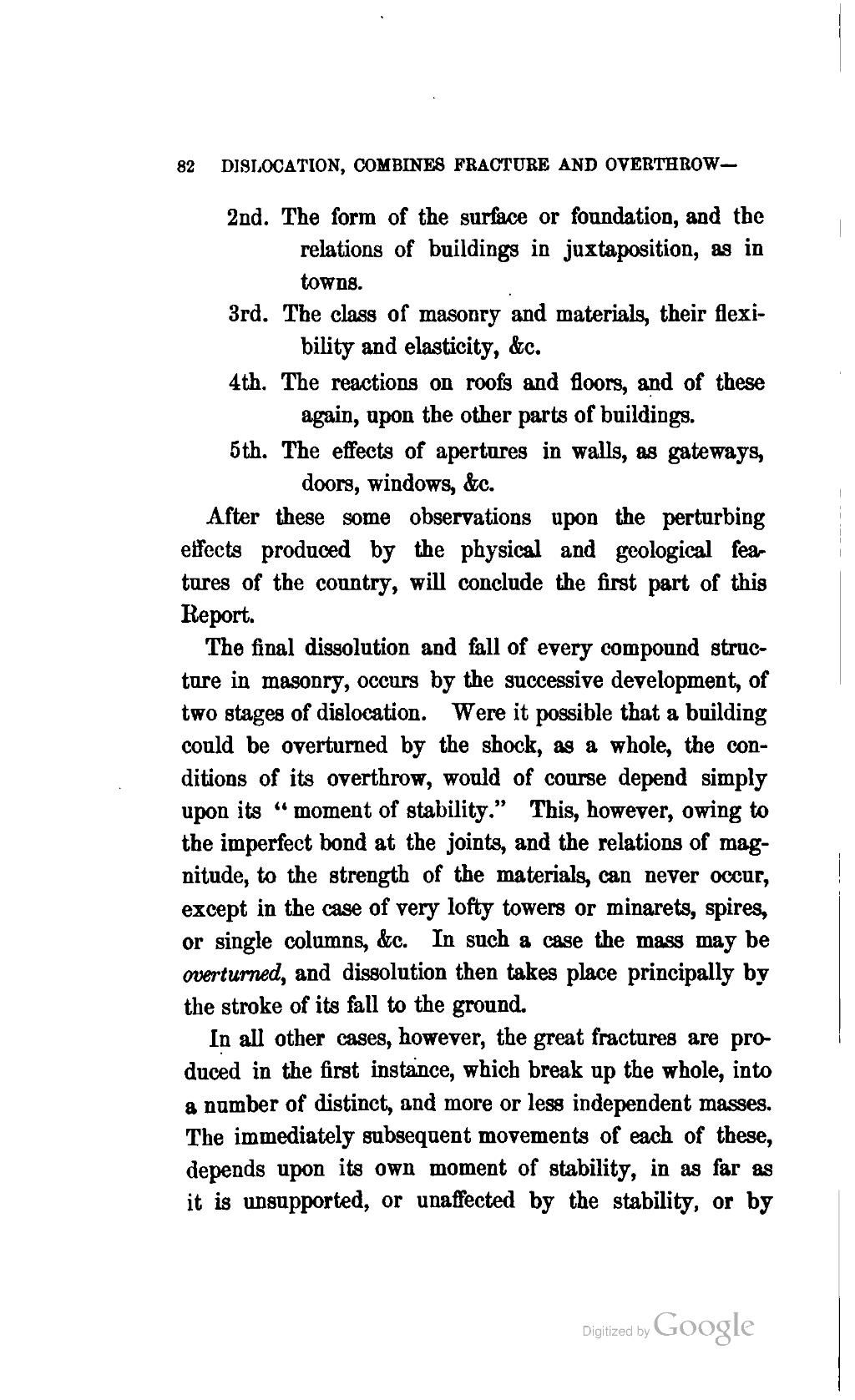- 2nd. The form of the surface or foundation, and the relations of buildings in juxtaposition, as in towns.
- 3rd. The class of masonry and materials, their flexibility and elasticity, &c.
- 4th. The reactions on roofs and floors, and of these again, upon the other parts of buildings.
- 5th. The effects of apertures in walls, as gateways, doors, windows, &c.
After these some observations upon the perturbing effects produced by the physical and geological features of the country, will conclude the first part of this Report.
The final dissolution and fall of every compound structure in masonry, occurs by the successive development, of two stages of dislocation. Were it possible that a building could be overturned by the shock, as a whole, the conditions of its overthrow, would of course depend simply upon its "moment of stability." This, however, owing to the imperfect bond at the joints, and the relations of magnitude, to the strength of the materials, can never occur, except in the case of very lofty towers or minarets, spires, or single columns, &c. In such a case the mass may be overturned, and dissolution then takes place principally by the stroke of its fall to the ground.
In all other cases, however, the great fractures are produced in the first instance, which break up the whole, into a number of distinct, and more or less independent masses. The immediately subsequent movements of each of these, depends upon its own moment of stability, in as far as it is unsupported, or unaffected by the stability, or by

